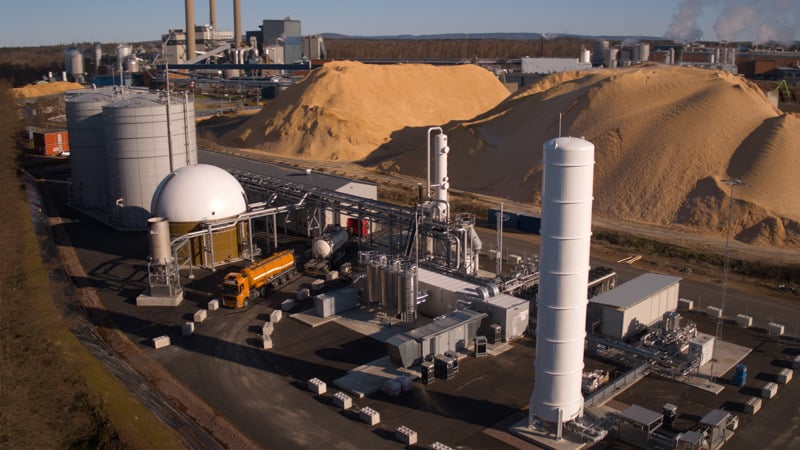Nymölla biogas plant
The biogas plant in Nymölla was built by Gasum in 2020 in partnership with Stora Enso, on whose pulp and paper mill site the plant stands.
Contact information
Address:
Nymöllavägen
29573 Nymölla
Sweden
Plant Manager
Reine Karlsson
tel. +46 76 100 73 66
reine.karlsson@gasum.com
The plant extracts the organic matter in the mill’s effluent and turns it into renewable biogas, which is then liquefied (LBG). The project shows how to utilize the advantages between the two industries in close cooperation.
 The plant can produce as much fuel annually as around 200 trucks use in a year. Use of LBG as a heavy duty vehicle fuel enables a reduction in carbon dioxide emissions by as much as 90% compared with a fossil fuel.
The plant can produce as much fuel annually as around 200 trucks use in a year. Use of LBG as a heavy duty vehicle fuel enables a reduction in carbon dioxide emissions by as much as 90% compared with a fossil fuel.
Operational since:
2021
Treated amount of substrate:
18.000 000 m3/year
Gas production capacity:
75-80 GWh/year
